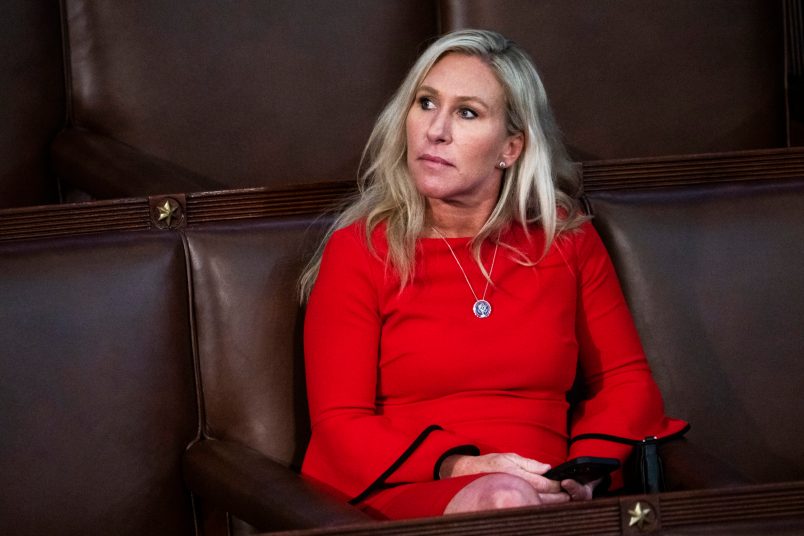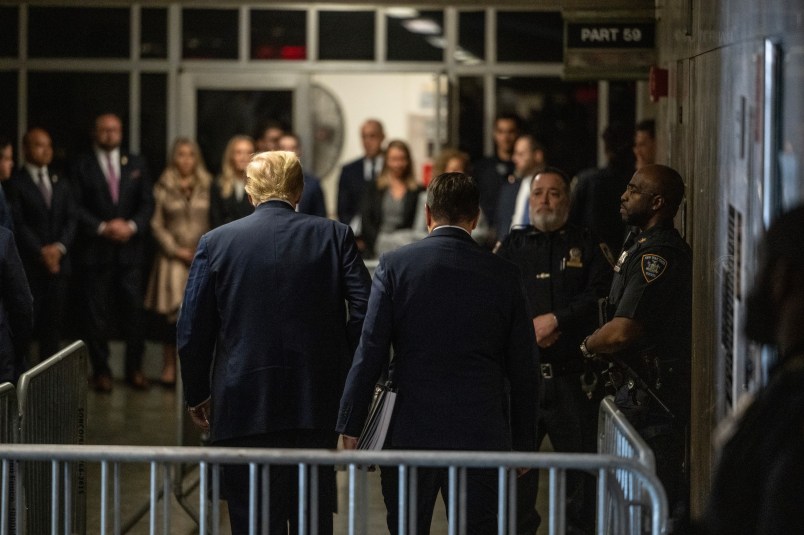An inside look at how the Department of Justice has changed under George W. Bush, and particularly under Alberto Gonzales.
Update: Some readers have asked me to further highlight the piece I linked to above, an interview that Daniel Metcalfe, a recently retired senior career DOJ lawyer, gave to the Legal Times‘ Tony Mauro. Gladly.
Metcalfe had been with the Justice Department since 1971, so much of the perspective what he is able to offer on the Bush Justice Department is historical. Here is Metcalfe on how quickly things changed after Alberto Gonzales became attorney general:
Ever since the Watergate era, when Edward Levi came in as attorney general to replace former Sen. William Saxby soon after Nixon resigned, the Justice Department maintained a healthy distance between it and what could be called the raw political concerns that are properly within the White House’s domain. Even Reagan’s first attorney general, William French Smith, did not depart greatly from the standard that Levi set; as for Meese, I knew him to be more heavily involved in defending himself from multiple ethics investigations than in bringing the department too close to the White House, even though he came from there.
More recently, of course, the DOJ-White House distance hit its all-time high-water mark under Janet Reno, especially during Clinton’s second term. And even John Ashcroft made it clear to all department employees that, among other things, he held that traditional distance in proper reverence; he proved that this was no mere lip service when, from his hospital bed, he refused to overrule Deputy AG Comey on what is now called the “terrorist surveillance program.” Especially in the wake of 9/11, which strongly spurred the morale and dedication of Justice Department employees, myself included, I saw only a limited morale diminution in general during the first term.
But that strong tradition of independence over the previous 30 years was shattered in 2005 with the arrival of the White House counsel as a second-term AG. All sworn assurances to the contrary notwithstanding, it was as if the White House and Justice Department now were artificially tied at the hip — through their public affairs, legislative affairs and legal policy offices, for example, as well as where you ordinarily would expect such a connection (i.e., Justice’s Office of Legal Counsel). I attended many meetings in which this total lack of distance became quite clear, as if the current crop of political appointees in those offices weren’t even aware of the important administration-of-justice principles that they were trampling.
Metcalfe also makes an interesting–and on its face, plausible–claim that I don’t recall hearing before: namely, that the traditional second term decline in the quality of new political appointees is worse in Republican administrations:
I’ll now say something that might sound partisan, even coming from a purposely nonpartisan registered independent, but it’s really not: In my experience over 11 presidential administrations, from Nixon I to what can be called Bush III, there is an unmistakable drop-off in overall appointment quality during a second presidential term — and this definitely is more so during a Republican administration. Perhaps this is due to there being a lower quality of political appointees in Republican administrations to begin with, given that, by and large, they give up more than Democrats do to enter government service, especially with the post-Watergate ethics restrictions that all government officials face.
This observation is nothing new, by the way; one need only look at the relative ages and experience levels of comparable appointees in successive administrations to see it. So when you enter the second term of a Republican administration, you get the worst of all possible worlds: You actually see some influential political appointees who are, to put it bluntly, too subject-matter ignorant to even realize how ignorant they are. (This is assuming that, if they knew, they’d actually care.)
And compounding this, as mentioned earlier, is the strong drive of political appointees at all levels (perhaps more so if they are attorneys, whose background is amenable to legal positions throughout the executive branch) to obtain that maximum capstone position before the second term ends. What happens to bureaucracy at such a time is that it becomes sluggish to the point of constipation, driven only by expediency as gauged from a political or personal agenda, and it sometimes yields some truly mind-boggling results, such as the current U.S. Attorney nightmare.
Metcalfe’s perspective is worth considering. It is, in some respects, a more benign explanation for some of what we have seen than I might favor. I use “benign” guardedly because what Metcalfe witnessed in the last two years of his tenure at DOJ was clearly distressing to him and, in his view, marred the department’s reputation, something he took great pride in.
What I mean is that the dysfunction he describes at the staff level can be seen as the cause of the purge scandal or it can be seen as a means to an end. If you subscribe to the former view, then Purgegate is a mess that could have been avoided if it had merely been handled better, a public relations snafu due to poor staffing. The latter view, which is perhaps more cynical but I also think more realistic, is that placing young, inexperienced, impressionable staffers in high level department positions enabled higher-ups in the Administration to exert far greater control in promulgating the Rove political agenda. (That staff level youth and inexperience could be blamed when and if the crap hit the fan was merely another advantage to the plan.)
Second term malaise may have a historical precedent, but the politicization of the Justice Department is classic Karl Rove.








